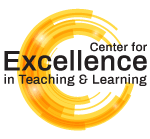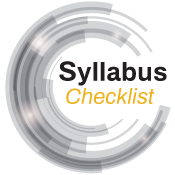|
CETL | Canvas | AI Guide | Course Design | Online | Software | Workshops Learner-Centered SyllabusThe purpose of a syllabus is to clearly communicate the value, purpose, and process of becoming educated in a field of study. A good syllabus is a road map to student success, carefully laying out a sequence of learning experiences, assignments, and requirements necessary to accomplish clearly articulated learning outcomes. But what does that mean? What does that require from the faculty and the students? How do we build it and what should it look like? A syllabus should be learner centered (noting the diversity of learners) and goal oriented (a pathway to success). It can also be viewed as something akin to a contract—a formal agreement between all parties, agreed to on the first day of class. A good contract protects both sides, and the expectations of professors and students alike should be clearly articulated. Students respond favorably to syllabi that indicate what they should reasonably expect of their professor—presence, accessibility, timely and meaningful feedback, etc. Students also respond favorably to unambiguous statements academic integrity, civility, accommodations, attendance, participation, assessments, and grading policies. When you take a look at your syllabus, put yourself in the student's seat. Does it connect with students and inspire them, or does it look like a sterile set of rules and expectations? Does it convey the importance of what will be studied in a way that makes sense to students? Does it relate to your students and the rest of the curriculum? Think about flipping the value proposition and designing a syllabus that does more than convey rules and what students need to know and do. Explain the how and the why of their work—how and why specific assignments and activities are used to help students accomplish specific learning goals. Because the syllabus is the initial point of contact between you and your students, your presence matters—and so does theirs. CETL can help you create video content, low-stakes engagements, and other interactions that foster community in your classes and Canvas spaces. Just as you should use the written word carefully to reveal your commitment to student learning, you should take the time to discuss the syllabus with students on the first day of class. Don’t just read the document; talk about it. Share your commitment to their success and what that looks like. Discuss the intentionality of readings, exercises, activities, and assignments. Take the time to write and talk about:
|
||
Instructors should be mindful of policies
regarding FERPA. Test your knowledge by |




